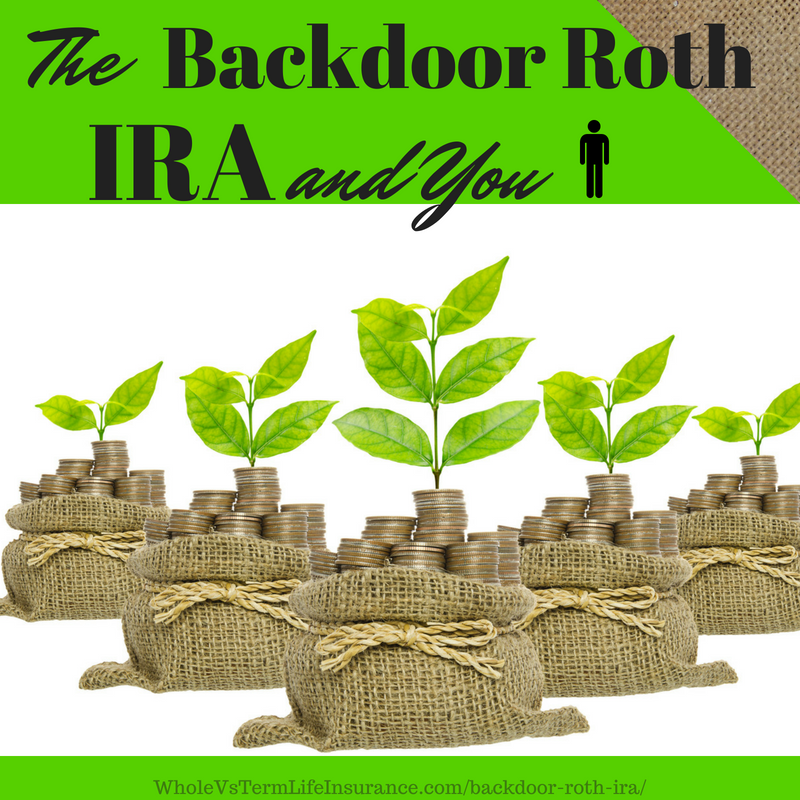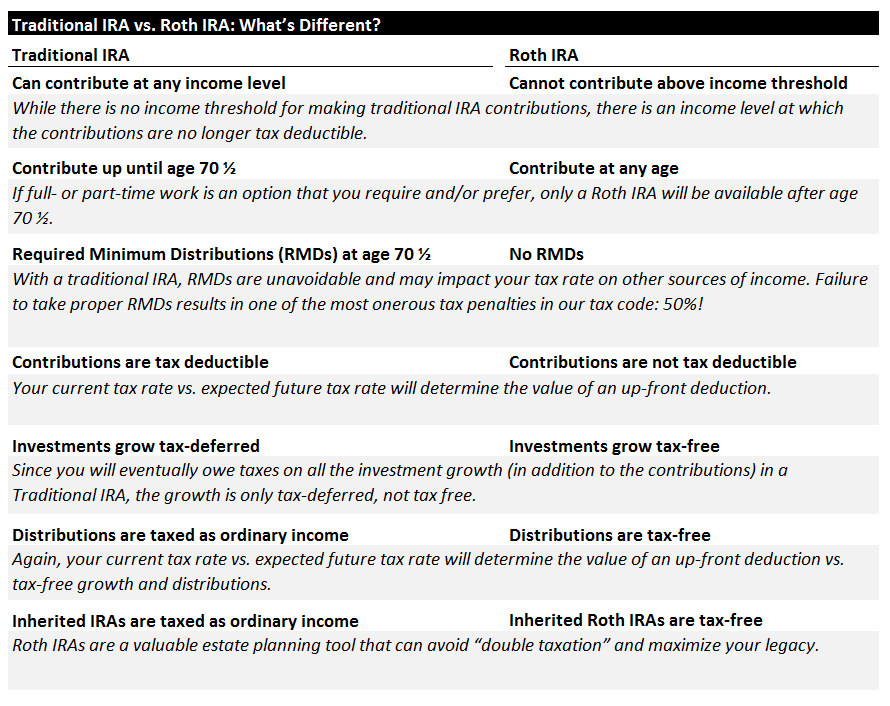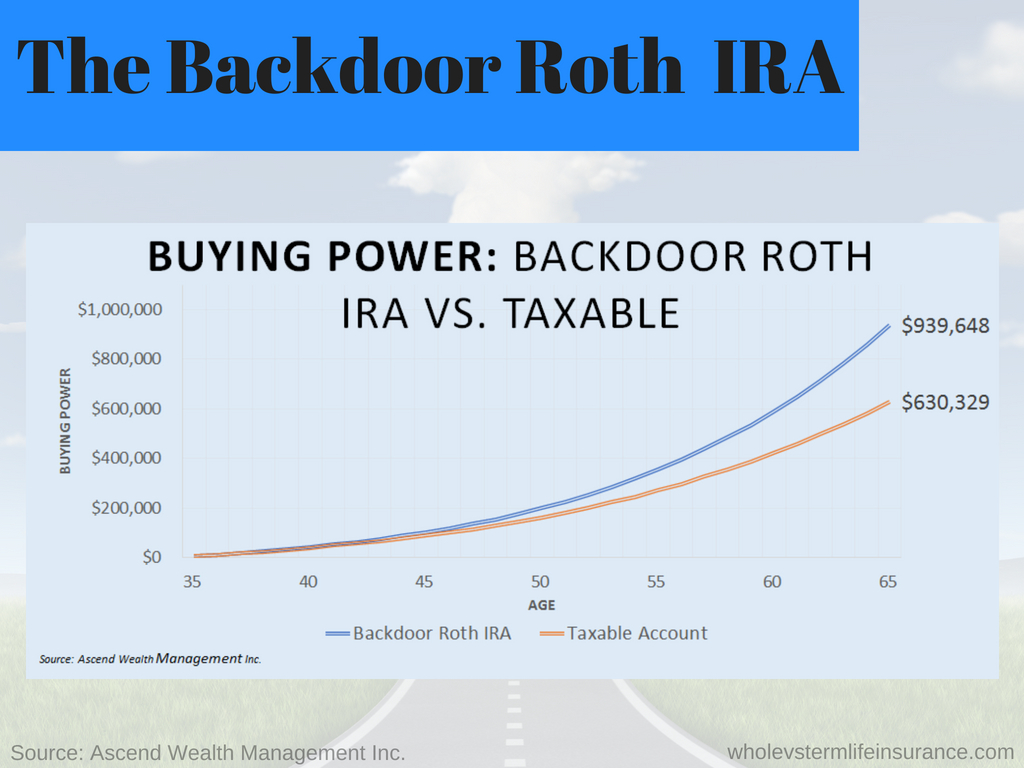Should you consider accessing Roth IRAs through the backdoor? This guest post will discuss the following topics:
In this Guest Post Series we offer a short article from Mark Bourguignon, the founder of Ascend Wealth Management, a private wealth management and financial planning firm located in the San Francisco Bay Area.
Accessing Roth IRAs Through the Backdoor: A Workaround for High-Income Earners
Individual retirement accounts (IRAs) are powerful tax-advantaged savings accounts that many investors are either not taking advantage of at all, or not in the correct manner. Often, this is due to a misunderstanding about how IRAs work. I sometimes hear, “I didn’t know I could contribute to an IRA, if I have a 401(k) plan at work,” or “My income level prohibits making contributions to an IRA.”
Many individuals are unaware of certain strategies available to them to maximize their IRA benefits.
This article will explain the basic similarities, differences and benefits of traditional IRAs and Roth IRAs and discuss a unique strategy, the “Backdoor Roth IRA,” that can help you contribute to a tax-free Roth IRA, even if you are a high-income earner.
What’s the Difference Between a Traditional IRA and Roth IRA?
Both traditional and Roth IRAs have the same annual contribution limits ($5,500 in 2018), catch-up contribution allowance ($1,000 beginning at age 50) and qualified (non-penalty) withdrawal age, beginning at 59 ½.
The differences between the two types of IRAs are more notable. While taxes are the most often discussed reason to prefer one over the other, there are other characteristics that should be taken into consideration as well, for example: income thresholds and distribution requirements.
The Following Table Highlights their Differences:
So Which Type of IRA Is Right for You?
As with most things related to your wealth, the answer depends on your unique situation and outlook for the future. A good guideline, however, is that if you are planning on early retirement and/or feel that your future tax rates will be lower than they are currently, a traditional IRA makes good sense.
On the other hand, if you are seeking future tax avoidance, a Roth IRA would be a good choice. Beyond taxes, there are other reasons that a Roth IRA can be a valuable financial planning tool:
- 1No Required Minimum Distributions (RMDs). Roth IRA owners have no requirement to take distributions at a certain time, while traditional IRA owners must take RMDs according to a defined schedule beginning at age 70 ½, regardless of their need. These RMDs are taxed as ordinary income and may affect the taxation of any additional retirement income, including: social security, investment income/capital gains, part-time work, pension, rental property, etc.
- 2Investment Flexibility. Strategically allocating your investments to multiple “tax pools” (e.g., taxable, tax deferred, tax free) provides an opportunity to lower your income taxes and estate taxes, reduce trading costs, and even increase returns*.
- 3Distribution Flexibility. Having multiple account types to withdraw from during retirement creates flexibility, enabling you to use strategies that may avoid unnecessary taxes.
- 4Estate Planning. No RMDs and the tax-free inheritance of a Roth IRA make it a better tool for leaving money to others.
IRA Contribution Rules Limit If High-Income Earners Can Contribute:
If you’re now thinking that a Roth IRA is more desirable, you’re not alone. In 2010, the IRS removed the income limit on your ability to move money from a traditional IRA to a Roth IRA (known as a Roth conversion) and for the first time ever, conversions exceeded total combined contributions to both types of IRAs. In fact, the number of conversions increased over 800% in 2010 to $64.8 billion, and most of those conversions were done by high-income earners—the same cohort that IRS rules explicitly prohibit from making direct Roth IRA contributions each year.
While the income limits on conversions were removed, the income limits on contributions to a Roth IRA stood pat (>$135,000 if you’re single; >$199,000 if you’re married filing jointly). Thus, high-income earners were able to pay the associated taxes and convert unlimited amounts of money into a Roth IRA, but they still couldn’t make annual Roth IRA contributions.
As well, the ability to make tax deductible contributions to a traditional IRA is phased-out above a certain income level ($73,000 for individuals and $121,000 for married couples). This meant that many investors were denied any chance to receive the tax deduction benefits of a traditional IRA and the tax-free Roth IRA was not available at all. This left many high-income earners feeling left out.
Here’s How High-Income Earners Can Still Fund a Roth IRA:
When you come home and find that the front door is closed, you normally check the back door. When it comes to Roth IRAs, a perhaps unintended, but perfectly legal, consequence of the 2010 IRS rule that removed income limits on Roth conversions, also unlocked the possibility of funding a Roth IRA every year via a Backdoor Roth IRA.
What is a Backdoor Roth IRA?
The Backdoor Roth IRA is a two-step process that provides a way for high-income earners to make annual Roth IRA contributions. This strategy is viable for two reasons: 1) anyone, regardless of income, can make a non-deductible contribution to a traditional IRA, and 2) there are no income limits on Roth conversions.
A Backdoor Roth IRA is executed by following these two steps:
- 1Make a current year non-deductible contribution to a traditional IRA.
- 2Conduct a tax-free Roth conversion of the contributed amount at a later date.
There are some important details you need to be aware of, when executing a Backdoor Roth IRA. The first is the IRS “pro-rata rule” which is the formula used to determine how much of a distribution is taxable when you, as the account owner, hold both after-tax and pre-tax dollars in your IRA(s). The second is IRS Form 8606, a simple form that keeps track of the “basis” (i.e., non-deductible contributions) in your traditional IRA, so that you don’t pay taxes again on those dollars when they are converted into a Roth IRA.
What’s the Value of a Backdoor Roth IRA?
“Is this really worth it?” you ask. I find that the best way to evaluate financial strategies and present options to clients is to show a year-by-year progression, using tables and charts.
It’s worth pointing out that the Backdoor Roth IRA strategy is for high-income earners who are traditionally “locked out” of making any tax-deductible contributions to a traditional IRA or any sort of direct Roth IRA contribution. The alternative is to put funds into a taxable/trust account each year. Without crunching any numbers, it’s a no-brainer to say that shifting money from a taxable account to a tax-free account is, of course, always highly advantageous.
Using conservative assumptions, we can show that utilizing the Backdoor Roth IRA strategy for 30 years increases the after-tax buying power of your investments by 49%! This assumes that all of your investments are liquidated at age 65, and only long-term capital gains taxes are paid from the taxable account. If you assume that state taxes are owed as well (they are owed in 41 states), that any of the gains during those 30 years are taxed as short-term, or if any of the money is liquidated at a later date, your buying power advantage would continue to increase.
If you find yourself intrigued by the benefits of a Backdoor Roth IRA, you’ll be excited to know that there’s another strategy, referred to as the “mega Backdoor Roth IRA,” that may allow you to contribute an additional $36,500 per year to your Roth IRA regardless of your income level. That’s more than 6 times the annual $5,500 contribution limit. If this is available, the potential is there for you to drastically increase the size of your tax-free retirement nest egg.
Conclusion of the Backdoor Roth IRA, Accessing Roth IRAs Through the Backdoor:
Developing an intelligent investment strategy is only the tip of the iceberg, if you want to maximize your wealth. A comprehensive financial plan should also consider other actions, such as reducing taxes as a way of generating alpha (outperformance) from your portfolio. After all, what you don’t pay in taxes each year is available to reinvest, and compound, over many years. A Backdoor Roth IRA is just one of many viable tools for reducing taxes and increasing your risk-free alpha.
At Ascend Wealth Management, we find that utilizing all of the types of tax-advantaged accounts available to you (e.g., IRAs, 401(k)s, HSAs, 529s, etc.), knowing the optimal order in which to contribute to them, and taking distributions in a tax-effective manner, all serve to greatly enhance our clients’ wealth.
If you find the choices regarding your investments to be overwhelming, or don’t have the time to navigate the landscape on your own, it’s a good idea to find a reputable investment advisor to help you. At our firm, we find that many of our clients are plenty smart, but they’re also very busy and have other ways they would prefer to spend their time. They feel relieved to utilize the experience of a professional who deals with the same opportunities often.
About the Author:
Footnotes to Backdoor Roth IRA:
*In a White Paper titled “Advanced Tax Planning: The Holy Grail of Investing", we demonstrated how proper asset location optimization can be used to structure portfolios that lower income taxes, estate taxes and trading costs, while also increasing total returns.
Whole Vs Term Life Insurance is not a licensed financial planner. Therefore we requested that a licensed financial planner discuss this topic for us. Should you have any questions concerning IRAs or other investment questions, please see a licensed financial adviser in your jurisdiction.

 Speak with an experienced advisor!
Speak with an experienced advisor! 




